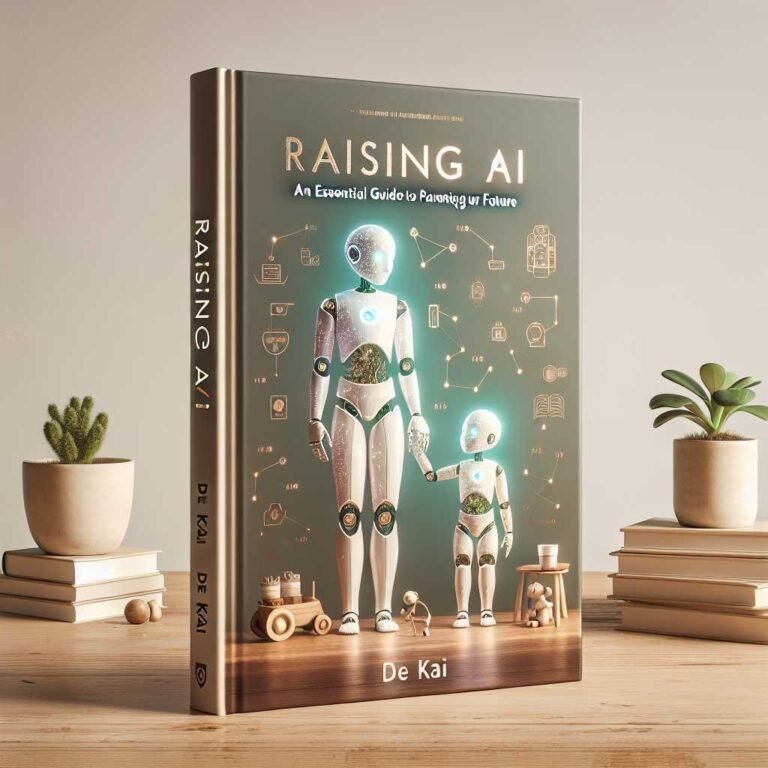The It Girl by Ruth Ware: A Smart, Twisty Campus Mystery Worth Losing Sleep Over [Review]
What if the person you loved most in college—the friend you admired, envied, and followed—wasn’t who you thought she was? And what if the man you helped send to prison for her murder…wasn’t guilty? Ruth Ware’s The It Girl opens with that needle-in-the-vein kind of hook and doesn’t let up, delivering a dual-timeline mystery that toggles between Oxford’s rarefied halls and the aftermath of a crime that refuses to stay buried.
If you’re here because you loved The Woman in Cabin 10 or are hunting for a dark academia–leaning thriller with real emotional stakes, you’re in the right place. I’ll keep this review spoiler-free while giving you exactly what you need: what it’s about, what works (and what doesn’t), where it sits within Ware’s body of work, and whether it’s the right next read for you.
Let’s dig in.
TL;DR (Spoiler-Free): Should You Read The It Girl?
Yes—especially if you like character-driven whodunits rooted in friendship dynamics and the slipperiness of memory.
- Tone: Elegant, tense, and immersive; more psychological puzzle than action-heavy thriller.
- Pacing: Steady, with a crescendo in the final third; the dual timeline adds momentum.
- Vibes: Oxford college life meets modern domestic suspense; think dark academia without the gothic excess.
- Best for: Fans of Agatha Christie–style “fair play” clues, layered female friendships, and twisty reveals that actually make sense.
Rating: 4.5/5 for atmosphere, plotting, and emotional payoff.
What The It Girl Is About (Without Spoilers)
April Clarke-Cliveden is everything her name suggests: dazzling, rich, and dangerously charismatic. She’s the first person Hannah Jones meets at Oxford, and soon Hannah is folded into April’s inner circle—Will, Hugh, Ryan, and Emily—the kind of instant college family that feels unbreakable. By the end of that first year, April is dead.
A decade later, Hannah is pregnant, married to someone from that tight-knit group, and trying to move forward. The man convicted of April’s murder, a college porter named John Neville, has just died in prison. Case closed—or so Hannah hopes.
Then a journalist knocks with new evidence. Doubt creeps in. Did Hannah’s testimony help convict an innocent man? As she reconnects with her old friends and retraces the final weeks of April’s life, Hannah realizes each of them is holding something back. And she might be, too.
Why that matters: The stake isn’t just “who killed April.” It’s also “what does justice look like when memory fails?” and “how do we live with the stories we tell ourselves to survive?”
The Hook: Dual Timelines That Actually Pay Off
Ruth Ware structures The It Girl in “Then” and “Now” chapters. In the “Then,” we live inside freshman-year Oxford—its rituals, hierarchies, and intoxicating new freedoms. In the “Now,” Hannah’s present life is punctured by doubt, and that doubt propels her into a risky, emotionally taxing investigation.
- The “Then” timeline provides texture: parties, tutorials, petty rivalries, and April’s magnetic chaos.
- The “Now” timeline drives the mystery: witness interviews, new leads, and the slow peeling back of everyone’s alibis.
This structure does more than ratchet tension. It critiques how we romanticize our past. Memory, Ware suggests, is less a photograph than a story under constant revision.
Characters Who Stick With You
One of Ware’s strengths has always been character work, and this book leans into that with layered, plausible people you can believe in—even when you don’t trust them.
- Hannah Jones: Relatable, quietly stubborn, and wrestling with guilt. Her pregnancy isn’t a gimmick; it sharpens her fear and heightens the stakes. You feel the tug-of-war between self-preservation and doing the right thing.
- April Clarke-Cliveden: The titular “It Girl” is alive on the page—sparkling and cruel, generous and manipulative. Ware smartly keeps April’s true self elusive. Everyone loved a different version of her; that ambiguity is the engine of the book.
- The college friends: Will, Hugh, Ryan, and Emily are distinct without becoming caricatures. Their post-college trajectories feel real, and each has believable reasons to protect—or obscure—the past.
- John Neville: The porter at the center of the case is more than a plot device. His presence raises questions about class, bias, and how outsiders are perceived within cloistered institutions.
Here’s why that matters: When a mystery hinges on the psychology of a small group, you need credible motives and messy human contradictions. Ware delivers. You might suspect everyone at one point, but by the end, the final reveal feels earned.
Themes: Privilege, Performance, and the Price of Being “It”
Peel back the crime and The It Girl is also about:
- Privilege and power: Oxford’s collegiate systems—traditions, titles, and gatekeepers—create an ecosystem where some voices carry farther than others. To understand the tension, it helps to understand the setting. Learn more about the University of Oxford’s colleges and culture at ox.ac.uk.
- The performance of identity: April is both person and persona. Social media amplifies this, but so do the everyday roles we play—protector, skeptic, confidante.
- Memory’s fallibility: The book questions how trauma rewrites our recollections—and how easy it is to fill gaps with certainty.
- Motherhood and fear: Hannah’s pregnancy isn’t just a plot point; it’s a lens. It makes her more vulnerable and more courageous, which deepens the emotional stakes of every decision she makes.
- Justice vs. closure: Is it better to live with a lie that feels safe or face the truth and upend your life? Ware refuses simple answers.
If you like your thrillers to mean something after the final page, this thematic heft will work for you.
The Oxford Setting: A Character in Its Own Right
“Dreaming spires” can be a cliché—unless the writer knows how to make the architecture breathe. Ware uses Oxford’s beauty as a foil for its claustrophobia. Beneath the spires and manicured quads lies a pressure cooker of class, ambition, and social politics.
- The porter’s role: In many Oxford and Cambridge colleges, porters are front-desk fixtures and rule enforcers—a liminal presence, always there yet rarely seen. For context, see more about porters within collegiate systems on Wikipedia.
- The tutorial system: One-on-one or small-group teaching intensifies relationships with tutors, upping the stakes of both mentorship and missteps.
The result is a closed-circle mystery that feels both classic and contemporary.
Ruth Ware’s Craft: A Modern Spin on a Classic Whodunit
Critics often compare Ware to Agatha Christie—and here, the lineage is clear. We get a contained group of suspects, a string of plausible red herrings, and clues the reader can track. If “fair play” detective fiction is your jam, this is a confident modern example. Explore Christie’s legacy at the official site: agathachristie.com.
That said, Ware isn’t just doing pastiche. She folds in:
- A psychological realism Christie didn’t aim for.
- A nuanced look at media scrutiny in the social era.
- A protagonist whose body and future are on the line right now, not just her reputation.
If you’ve followed Ware’s career—try her bibliography at ruthware.com—you’ll recognize hallmarks: precise pacing, evidence that clicks into place, and an ending that feels inevitable in hindsight.
Pacing and Plot Mechanics: Slow-Build Tension, Satisfying Payoff
Is this a “blink and the room explodes” thriller? No. And thank goodness. Ware opts for slow-burn tension: long walks, careful conversations, and late-night realizations that twist the chessboard.
- The middle acts focus on witness contradictions and biases.
- The final act accelerates. When the reveal comes, it reframes earlier scenes rather than breaking the rules.
Important point: A good twist should surprise you and make previous chapters sharper, not obsolete. The It Girl hits that balance.
Who Will Love The It Girl—and Who Might Not
You’ll probably love it if you: – Enjoy campus novels and dark academia vibes. – Like your thrillers character-first with real emotional stakes. – Appreciate mysteries where the clues are there if you’re looking.
You might not if you: – Prefer ultrafast, action-heavy plots. – Want a gritty procedural rather than an intimate psychological puzzle. – Dislike dual timelines or college-set stories.
Content Notes (No Spoilers)
- Violence: On-page discussion of a murder and some threatening situations; not gratuitous.
- Language: Occasional adult language.
- Sex and alcohol: College-party scenes and relationship dynamics, without explicit erotica.
- Themes: Grief, gaslighting, stalking, and pregnancy anxiety. If you’re sensitive to those topics, proceed with care.
Audiobook Notes
If you’re an audio listener, The It Girl shines in your ears. Ruth Ware’s thrillers are often narrated by Imogen Church, whose range and pacing fit Ware’s dialogue and mood shifts. The production underscores the dual timeline—voices feel different “Then” and “Now”—which helps track the story. For formats and editions, check the publisher’s author page at Simon & Schuster.
Tip: Listen at 1.1–1.2x speed to savor the prose while keeping momentum.
How This Compares to Other Ruth Ware Novels
- The Woman in Cabin 10: Faster pace, locked-room suspense at sea. More adrenaline, fewer layered friendships.
- The Turn of the Key: Gothic, tech-inflected domestic suspense. A single-protagonist spiral, less ensemble.
- One by One: A snowed-in, corporate-meets-cozy whodunit with high body count and tight tension.
The It Girl sits closest to a classic campus whodunit with a modern conscience. If you loved the cluework of One by One but want richer character shading, this is your sweet spot.
What Makes the “It Girl” Archetype So Compelling?
From Daisy Buchanan to Queen Bee archetypes, the “It girl” is a mirror—reflecting our fascination with charm and our suspicion of it. April’s charisma is both gift and weapon. Everyone sees what they want in her, and that projection becomes a plot device. In mystery terms, the more versions of the victim, the more potential motives. It’s no accident the genre calls it a “whodunit” (more here)—but The It Girl is also a “who-was-she, really?”
The Journalism Thread: Why It Matters
A persistent reporter reopens the case, which might sound like a familiar trope. Here, it’s fresh because it shines a light on how narratives are manufactured. True-crime media can distort the past, but it can also correct it. The book sits in that tension: between spectacle and truth.
Pro tip for readers who enjoy this angle: Reading alongside nonfiction about media and memory can enrich the experience. The broader cultural conversation—around wrongful convictions and the ethics of true crime—adds depth. For an overview of bestseller dynamics and how media shapes reading taste, browse the New York Times Best Sellers.
Readalikes If You Enjoyed The It Girl
- For campus tension: The Secret History by Donna Tartt (darker, more literary).
- For modern closed-circle suspense: The Guest List by Lucy Foley (snappier pacing, multiple POVs).
- For friendship and fallout: The Lying Game by Ruth Ware (boarding school secrets).
- For elite-school mystery with emotional heft: The Secret Place by Tana French (police procedural meets teen clique).
Each of these explores the cost of belonging and the messiness of truth.
What I Loved Most (And One Thing I Didn’t)
Loved: – The atmosphere. Oxford feels intimate and threatening all at once. – The character work. Hannah’s motives are complex yet crystal clear. – The fairness of the mystery. Clues are there; you’ll kick yourself later.
Less loved: – The middle stretch occasionally lingers. If you prefer relentless pacing, you may feel the drag. That said, the payoff justifies the simmer.
Is The It Girl “Dark Academia”?
Short answer: It borrows the aesthetic (elite campus, intense bonds, ritual, ambition) without bathing in gothic doom. If you want a blend of social realism and suspense—more seminar than séance—you’ll be satisfied. For a primer on the subculture, see Dark academia.
About Ruth Ware
Ruth Ware has built a reputation for elegant, high-tension thrillers that honor golden-age mysteries while speaking to modern fears. If you’re new to her, The It Girl is a great entry point. You can explore her books and news at the author’s official site: ruthware.com.
Frequently Asked Questions
Is The It Girl by Ruth Ware a standalone?
Yes. You don’t need to read any other Ware novel first. It’s a complete story with a clear ending.Is this a spoiler-heavy, twist-for-twist’s-sake thriller?
No. It’s twisty, but the plot is grounded in character psychology and plausible clues.How scary or graphic is it?
It’s tense and unsettling but not gory. Think psychological suspense over horror.Is there romance?
There’s a central relationship and past college entanglements, but romance is not the genre driver. The emotional core is friendship and trust.Does the Oxford setting matter, or could this take place anywhere?
The setting is crucial. The college system—its porters, tutorials, old-world etiquette—shapes the dynamics and the investigation.I loved The Woman in Cabin 10. Will I like this?
Likely, yes. Expect a slower build and deeper character work. If you prefer breakneck pacing, set expectations accordingly.Is The It Girl based on a true story?
No. It’s fiction. However, it engages with real-world issues like media narratives and wrongful convictions.Is the audiobook good?
Yes. Ruth Ware’s audiobooks are consistently strong, and this one is no exception. Check formats via the publisher at Simon & Schuster.
Final Takeaway
The It Girl is Ruth Ware at the top of her game: a sharp, character-rich whodunit that marries the elegance of a classic mystery with the emotional pulse of modern suspense. If you want a thriller that respects your intelligence, rewards close reading, and lingers after the last page, add this to your list.
If you found this review helpful, stick around for more smart, spoiler-light book coverage—or subscribe to get future reviews and readalike guides straight to your inbox.
Discover more at InnoVirtuoso.com
I would love some feedback on my writing so if you have any, please don’t hesitate to leave a comment around here or in any platforms that is convenient for you.
For more on tech and other topics, explore InnoVirtuoso.com anytime. Subscribe to my newsletter and join our growing community—we’ll create something magical together. I promise, it’ll never be boring!
Stay updated with the latest news—subscribe to our newsletter today!
Thank you all—wishing you an amazing day ahead!
Read more Literature Reviews at InnoVirtuoso
- Shadowbanned: The War on Truth and How to Escape It — Book Review, Insights, and the Digital Free Speech Survival Guide
- The Art and Science of Vibe Coding: How Kevin L Hauser’s Book Unlocks the Future of No-Code AI Software Creation
- Quantum Computing: Principles, Programming, and Possibilities – Why Anshuman Mishra’s Comprehensive Guide Is a Must-Read for Students and Researchers
- Book Review: How “Like” Became the Button That Changed the World – Insights from Martin Reeves & Bob Goodson
- Book Review: Age of Invisible Machines (2nd Edition) — How Robb Wilson & Josh Tyson’s Prophetic AI Playbook Prepares Leaders for 2027 and Beyond
- Almost Timeless: The 48 Foundation Principles of Generative AI – Why Mastering Principles Beats Chasing Hacks
- The AI Evolution: Why Every Business Leader Needs Jason Michael Perry’s Roadmap for the Future







